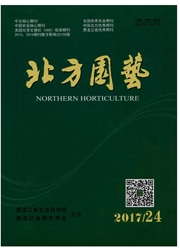

 中文摘要:
中文摘要:
工业废弃地土壤重金属污染严重,研究忍耐型或超累积植物对重金属的富集机理,并且针对某种或某些重金属的特征,筛选合适的重金属忍耐型或超累积植物对提高植物修复的效率有着重要的现实意义。该文在阐述重金属忍耐型或超累积植物富集重金属机理及植物筛选标准的基础上,根据群落演替理论,以葫芦岛杨家杖子钼矿区的尾矿库为研究对象研究了工业废弃地植物修复演替过程。结果表明:该区域植被恢复演替过程是从草本先锋植物的引入开始,地带性植被是针阔叶混交林,从裸地开始的进展演替大致经过裸地→草丛→灌丛→针叶林→针阔叶混交林阶段。为了实现群落的快速演替,迅速恢复地带性植被,以土壤改良和植被演替各阶段之间的迅速转化为原则,在各演替阶段都积极地引进下一演替阶段的植物种类。通过实地试验表明,现存的植物恢复模式:沙棘×柠条×(高羊茅、早熟禾、黑麦草),恢复效果显著。
 英文摘要:
英文摘要:
The pollution degree of soil heavy metal is rather serious in the industrial wasteland. It is necessary to do some research on bioaccumulation mechanism of resistant plants or hyperaccumulator for heavy metal ions and determination of the perfect cultivars and patterns of forest vegetation. According to community succession theory, this paper took Yangjiazhangzi molybdenum mine area in Huludao city as research area to carry out field vegetation survey. The succession of a natural community in the area began with the introduction of pioneer herbaceous plants. The zonal vegetation was coniferous and broadleaved mixed forest. The progressive succession began with bare land roughly experiences the stages of bare land→hassock→shrub→coniferous forest→coniferous and broadleaved mixed forest. In order to improve the efficiency of vegetation community succession, it was needed to introduce the vegetation for the succession period ahead in each phase. The restoration in tailing pond aims at centering on protection and considering Utilization as well by adopting the plant restoration measure of the combination of shrub and herb plants. The optimum plant disposition mode was: sea buckhorn ×caragana× (tall rescue, bluegrass and ryegrass).
 同期刊论文项目
同期刊论文项目
 同项目期刊论文
同项目期刊论文
 期刊信息
期刊信息
